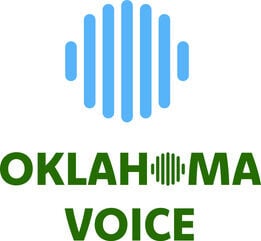OKLAHOMA CITY — When Zari Bigelow started looking into virtual charter schools for her son, only two options existed.
Twelve years later, Bigelow’s son, Ashton, 18, is now about to graduate from one of those schools and go to college, having spent his entire K-12 experience in public virtual education.
Her son was lucky that Oklahoma Virtual Charter Academy was the right school for him, she said. The Broken Arrow family tried a year with Epic Charter School, but Bigelow said it wasn’t as good of a fit.
“If we didn’t have any other options,” Bigelow said, “I don’t think Ashton would have been as successful as he is right now.”
That’s why Bigelow said she’s been happy to see more virtual charter schools opening in Oklahoma, giving parents today more choices.
Seven virtual charter schools are currently operating in the state, and an eighth has been approved to open later this year.
But as the number of virtual schools continues to climb and as even more apply for authorization, state officials have started to question how many more of these niche schools Oklahoma needs.
The state could surpass a “saturation point” if officials aren’t careful, said Robert Franklin, chairperson of the Oklahoma Statewide Virtual Charter School Board. The board is responsible for authorizing and overseeing all virtual charter schools in the state.
The thought crossed Franklin’s mind as the board considered two recent applications for new schools. The board rejected both proposals in a March 11 meeting over concerns neither had a fully developed plan for operations and finances.
Franklin said he’s unsure where the saturation point is, but a sign that Oklahoma has exceeded it could be the day when virtual enrollment reaches its natural limit and students move between schools based on which has the better marketing campaign.
“I don’t think that’s healthy,” Franklin said.
Rep. Mark McBride, R-Moore, said these schools should produce better academic results before the state considers opening more.
Each of the virtual charter school systems that participated in state reading, math and science tests in spring 2023 scored below the state average for district-wide results, state data shows.
McBride, who leads a House subcommittee on education funding, said there are reasons to have virtual charter schools, but right now “they’re not doing the job they should be doing.”
“It raises doubts,” he said. “I would like to see these academic scores come up before we entertain this any further.”
School choice advocates, though, say the state shouldn’t put limits on the virtual options available to families.
There could be a ceiling to how many students will seek out this type of education, but that doesn’t mean officials should curb the number of virtual charter schools, said Barry Schmelzenbach, executive director of the Oklahoma Public Charter School Association.
Some schools might keep their enrollment low to maintain highly specialized services, meaning there could be room for more online programs, Schmelzenbach said. Oklahoma hasn’t “come anywhere near where that saturation point would be,” he said.
Most virtual charter schools set capacity limits, but they have flexibility to adjust and admit more students during the school year.
Epic is the largest school by a wide margin with 27,000 students. All other virtual charter schools in the state have fewer than 3,500 children enrolled.
About 5% of Oklahoma’s 700,000 public school students are enrolled in a virtual charter school, according to 2024 enrollment figures from the Oklahoma State Department of Education.
That exceeds the national rate.
Only 1% of American public school students were enrolled in a virtual school in the 2021-22 school year, the most recent year of data available from the National Center for Education Statistics.
That data includes the hundreds of thousands of students who temporarily flocked to virtual schools during the COVID-19 pandemic. Those numbers have since declined in Oklahoma, as students returned to their brick-and-mortar schools.
Only 36 states had virtual schools as of 2021-22. Among them, Oklahoma had the sixth highest virtual school enrollment, leading other states that had dozens more online options to choose from, according to data compiled by the National Education Policy Center at the University of Colorado-Boulder.
Bigelow said she thinks the demand for virtual learning will grow now that more families tried it during the pandemic.
Oklahoma Voice is part of States Newsroom, a nonprofit news network supported by grants and a coalition of donors as a 501c(3) public charity. Oklahoma Voice maintains editorial independence. Contact Editor Janelle Stecklein for questions: info@oklahomavoice.com. Find more from Oklahoma Voice online at www.oklahomavoice.com


















Commented
Sorry, there are no recent results for popular commented articles.